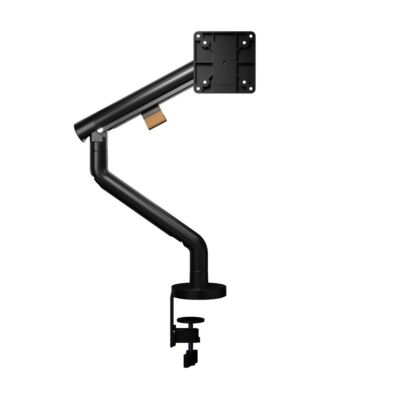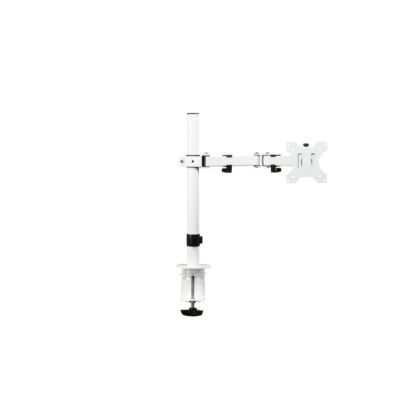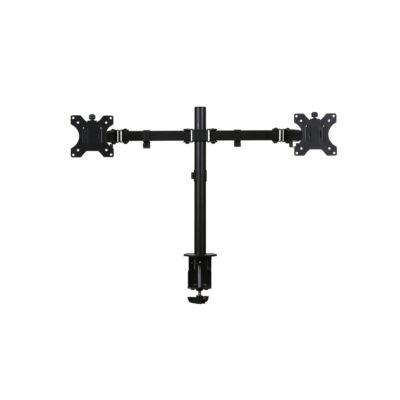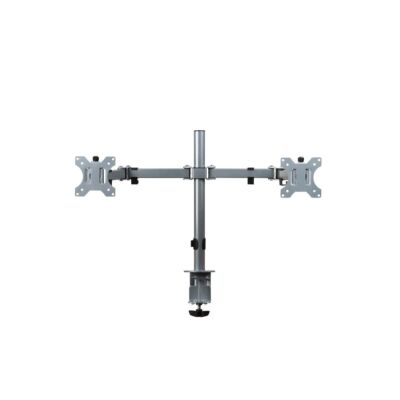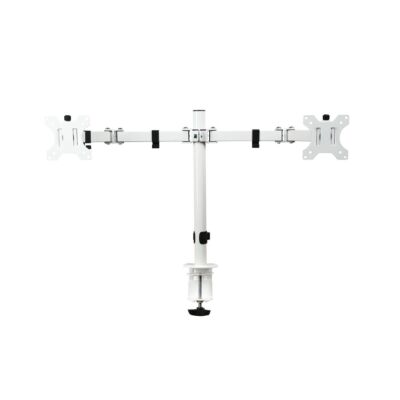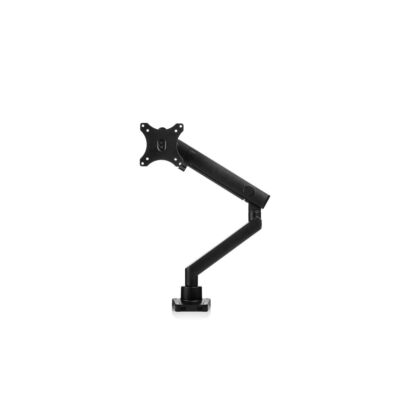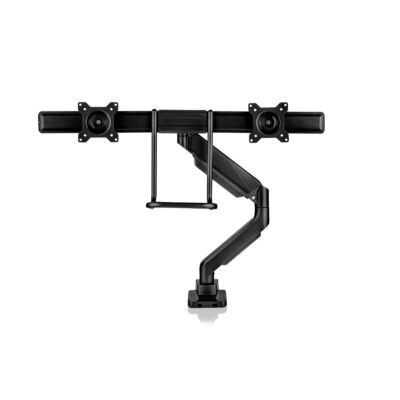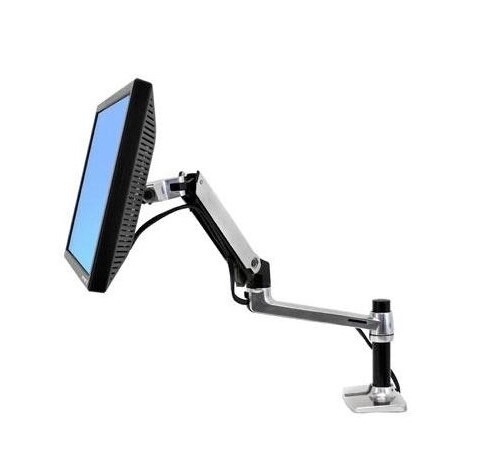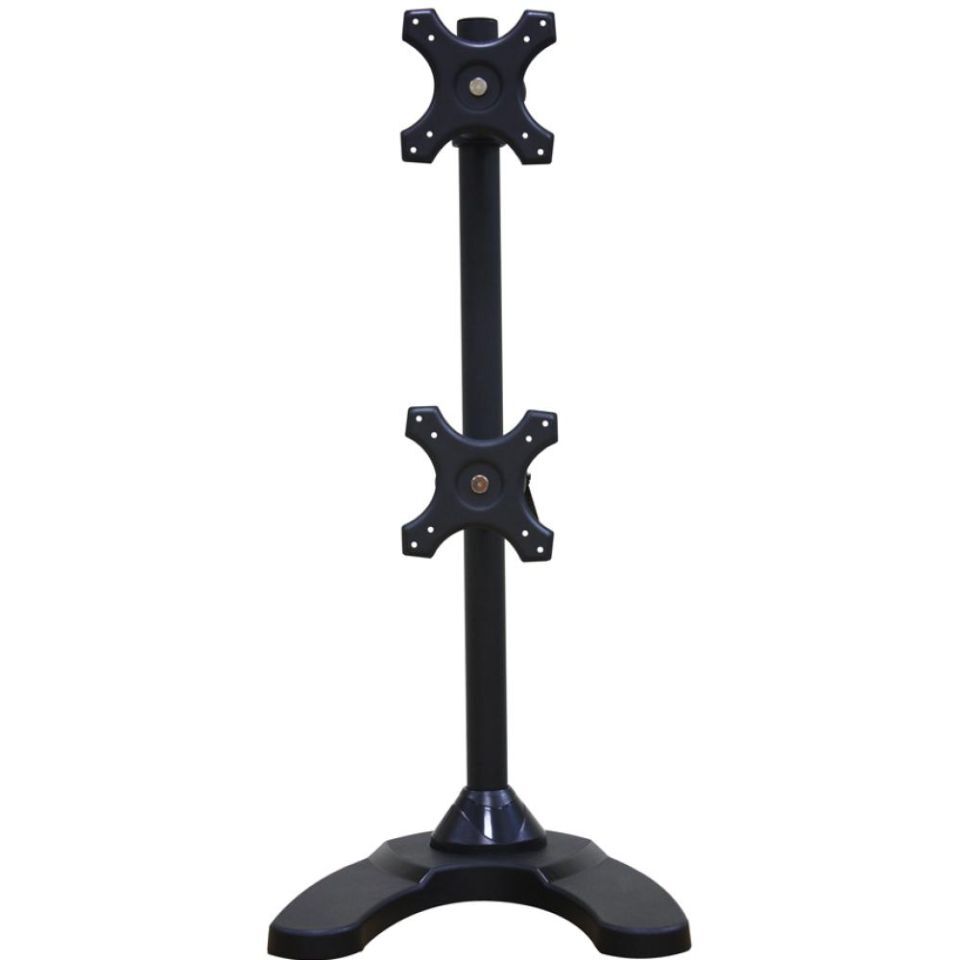Monitorarm
A monitor arm or stand provides more desk space. With a monitor arm, you can easily adjust the height of your screen. Additionally, the screens can be rotated horizontally or vertically. Using a monitor arm ensures that your screen is always at an ergonomic viewing height.
At Ergo2Work, we offer monitor arms in various brands, sizes, styles, and price ranges. Browse our range and make your workspace more efficient and ergonomic with a high-quality monitor arm.
What is a monitor arm?
A monitor arm is a device used to mount and support a computer monitor. It is a type of bracket that can be attached to the desk or wall, on which the monitor can be placed.
With a monitor arm, you can adjust the height, angle, and orientation of the monitor to improve ergonomics and optimize the viewing angle. This can help reduce eye and neck strain and promote a comfortable and healthy working posture.
Monitor arms are available in different sizes and styles, depending on the weight and size of the monitor, and they can be customized to the specific needs of the user. They are popular among remote workers, gamers, and professionals who spend long hours behind a computer.
What is a monitor stand?
A monitor stand is a device used to support and position a computer monitor or screen. It is designed to place the monitor at the proper height and viewing angle, allowing users to work comfortably and ergonomically.
Monitor stands come in various shapes and sizes, depending on the intended use and functionality. Some common types of monitor stands include:
Fixed stand: This is a simple stand that keeps the monitor at a fixed height. It provides basic elevation and stability but typically does not have adjustment options for the viewing angle.
Adjustable stand: This type of stand offers the ability to adjust the height of the monitor, as well as the viewing angle. It may have features such as tilt, swivel, and rotate, allowing users to customize the position of the screen to their preferences.
Number of monitors
Load capacity
Gas spring
Color
Material
Screen size
Brand
VESA-Kompatibilität
Tilt range
Swivel range
Rotation range
Adjustable in height
Discover all products

- Screen size: 17 - 32 inches
- Load capacity: 3 - 9 kg
- Mounting: Desk clamp, suitable for desktops with a thickness of 10 to 60 mm

- Screen size: 17 to 32 inches per arm
- Load capacity: 3 - 9 kg per screen
- Mounting: Desk clamp, suitable for desktops 10 to 60 mm thick

- Screen size: 13 - 32 inches
- Weight compacity 8 kg
- Mouting options: through-desk and desk clamp, compatible with desktops 10 to 88 mm thick
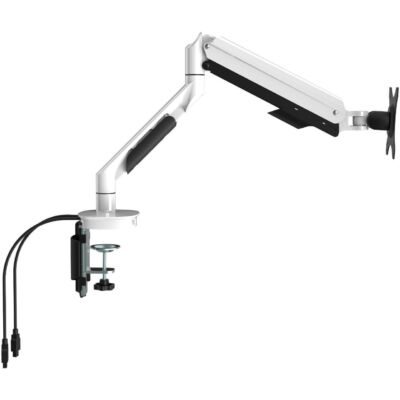
- Screen size: 17" - 30"
- 2 integrated USB 3.0 ports
- Mounting: desk clamp and grommet mount
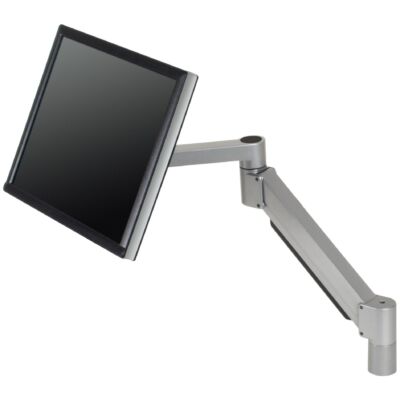
- Screen size: up to 24"
- Weight capacity: 2.3 - 7.7 kg
- Mounting: desk clamp, grommet mount, and wall mounting
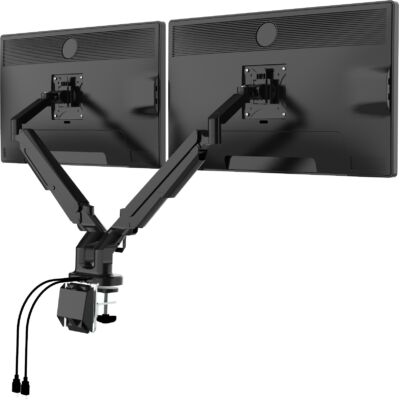
- Gas springs for smooth adjustability
- Integrated cable management
- Easy installation through desk grommet or clamp
Why use a monitor arm?
There are several reasons why people choose to use a monitor arm:
Ergonomics: With a monitor arm, you can adjust the height, angle, and orientation of the monitor to promote a comfortable and healthy working posture. By positioning the monitor at eye level, you can reduce neck and eye strain and increase productivity.
Space-saving: By lifting the monitor off the desk, you can create more workspace and maintain a clutter-free work area.
Flexibility: A monitor arm allows you to quickly and easily move and rotate the monitor, allowing you to adjust the viewing angle and position to suit your needs and preferences.
Style and appearance: A monitor arm can have a sleek and professional look, enhancing the appearance of your workspace.
In general, a monitor arm can contribute to a healthier and more productive work environment while also offering aesthetic benefits.
Types of monitor arms:
There are different types of monitor arms available, designed to meet different needs. For example, there are single monitor arms that are suitable for supporting a single monitor. There are also dual monitor arms and even monitor arms for three or more monitors, allowing you to support multiple screens. Additionally, there are fixed monitor arms that hold the monitor in a fixed position and adjustable monitor arms that can move and tilt the monitor in various directions. Some monitor arms are designed for wall mounting, while others attach to the desk. Finally, there are monitor arms specifically designed for certain types of screens, such as curved or ultra-wide monitors. It is important to consider the specific needs and requirements when choosing a monitor arm.
Can any monitor be attached to a monitor arm?
In general, any monitor can be attached to a monitor arm as long as it meets the mounting requirements of the arm. Most monitor arms have a VESA mounting pattern, which means the monitor must have VESA-compatible mounting holes. VESA stands for Video Electronics Standards Association and is a standard for mounting flat-panel monitors and TVs.
Before purchasing a monitor arm, it is important to check if the monitor you are using is VESA compatible. You can do this by referring to the monitor's manual or by measuring the distance between the mounting holes. If the distance matches the mounting holes of the monitor arm, you can securely and firmly attach the monitor to the arm.




